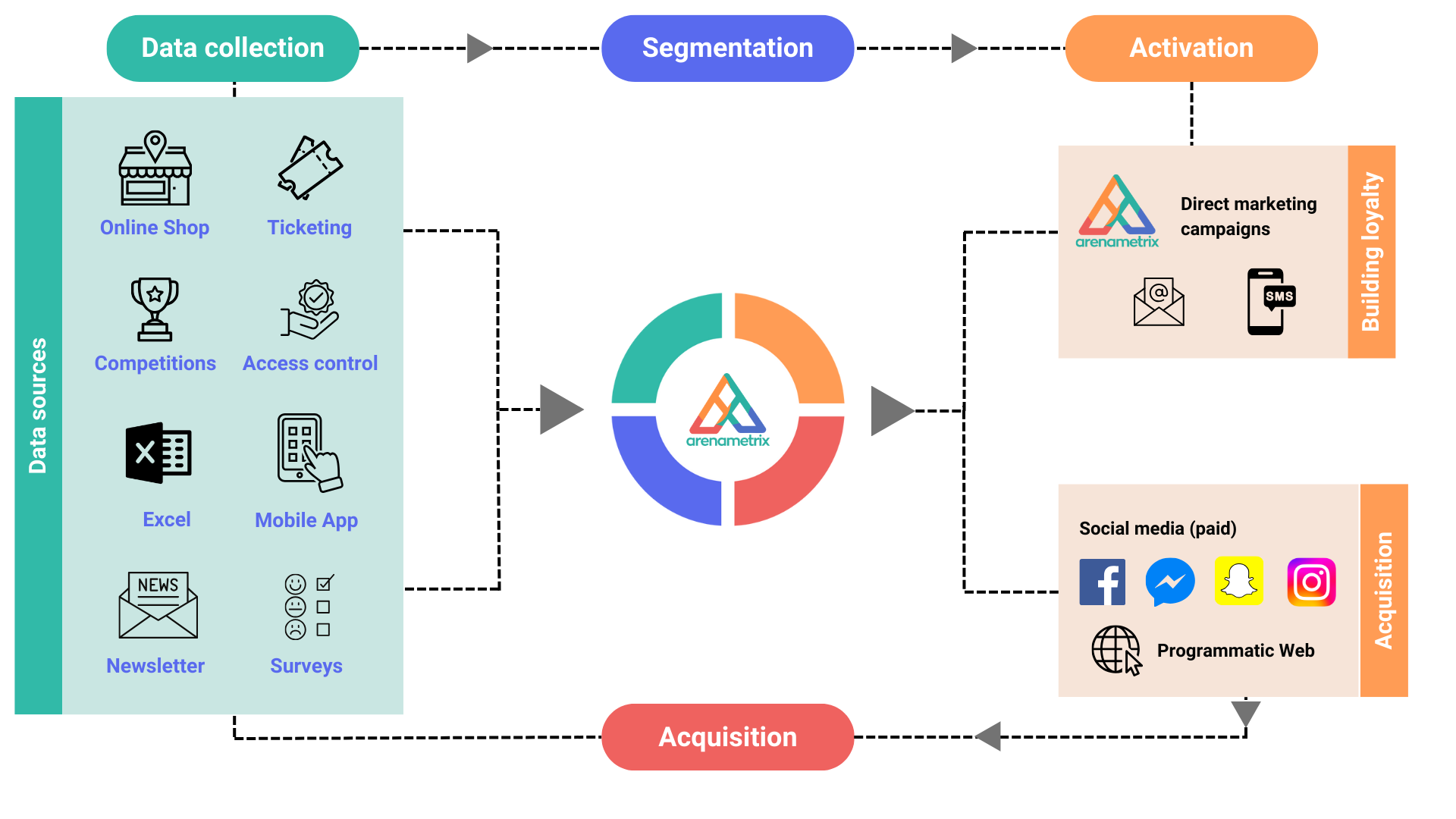Digital transformation requires a reconfiguration of operations to meet current challenges.
Step 1: Deploy Digital Data Collection Tools
Digital tools offer many advantages compared to traditional methods (paper forms, oral exchanges). They allow for unbiased data collection in an engaging manner, simplified and rapid data processing, as well as real-time decision-making for teams. Once these tools are in place, data collection can begin!
For example, the Maison des Arts du Léman opted to launch a display campaign to target an audience outside their database and encourage them to attend the Montjoux Festival. The goal of this campaign was straightforward: broadcast an advertisement to the right audience on the right websites. Thanks to this campaign launched via the Arenametrix platform, the Maison des Arts du Léman observed a return on investment of €3.76, meaning that for every euro spent, the campaign brought in €3.76 to the organization.

Another example is the Hall des Lumières, which implemented two tools for visitor data collection. First, the teams set up automated and personalized scenarios at key moments of the visitor experience:
-
- After purchasing a ticket online, future visitors are invited to subscribe to the Hall des Lumières newsletter, thereby enriching its database.
- After the visit, an automatic email is sent to evaluate the experience and better understand what motivated them to purchase their ticket initially.
In addition to these two emails sent via Arenametrix, the Hall des Lumières deployed GuestViews digital guestbook at the exit of the experience. During the Chagall exhibition presented in autumn 2023, the device allowed visitors to share their feedback on the experience, obtain some information about themselves (satisfaction, visit frequency, profile, knowledge of the venue, etc.), and provide their email address to join the Hall des Lumières database.
Almost 40% of participants agreed to leave their contact details.
Step 2: Analyze the Collected Data
In the next phase, data analysis allows for a better understanding of visitor behaviors and preferences. This analysis can be enriched by centralizing ticketing information, access control, purchase timing, or satisfaction surveys.
But once this data centralization is done, how do you navigate all the available information? Which indicators should you monitor to enhance your strategies for understanding and retaining your audiences?
At Arenametrix, we recommend focusing on 5 types of data-marketing indicators:
-
-
The proportion of qualified contacts
(ratio between the size of your database and the quality of contacts)
-
Sociodemographic information
-
Contact loyalty and lifecycle
-
Consumption data
-
The performance of your marketing campaigns
Arenametrix is THE CRM platform dedicated to cultural organizations, integrating your data through a native connection to over 150 sources (ticketing, Excel files, GuestViews visitor feedback devices, etc.), centralizing them, and enabling relevant analysis upon which an adapted strategy is based.

Step 3: Personalize Communications
The third step is the personalization of communication for targeted marketing purposes. It is crucial to adopt a personalized dialogue with your audience to ensure a positive visitor experience and, consequently, retain your public.
Post-purchase, pre- and post-event emails, as illustrated in this article, help create a connection and retain audiences. However, these examples are only a glimpse of what is possible with marketing automation. Other techniques are also possible and effective with Arenametrix.
Let's take the example of the Château de Chantilly, which personalizes its communications through managing visitor preferences. Following subscription to the newsletter on the website or after a purchase, seven themes are offered by the château in its preference center. Each type of communication sent can be added to favorites or not with a single click. Many of our clients have opted for a similar strategy, setting up marketing automation scenarios to strengthen the relationship with their audiences and provide valuable information, as described in this article.
In addition to these personalized communications via their CRM Arenametrix, the Château de Chantilly also benefits from its GuestViews visitor feedback device to interact with its visitors. Thanks to the automatic email sent after participation, the teams encourage the most satisfied participants to share their opinions on online review platforms and on their social networks.